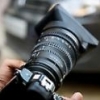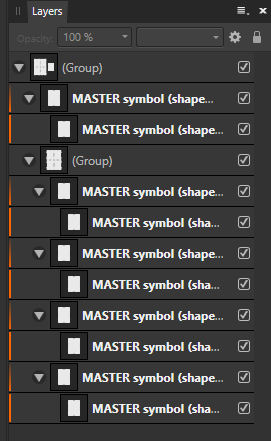
LuvMyDesignTools
Members-
Posts
18 -
Joined
-
Last visited
Recent Profile Visitors
700 profile views
-
 StickyFrog reacted to a post in a topic:
Set darker transparent checkerboard background color
StickyFrog reacted to a post in a topic:
Set darker transparent checkerboard background color
-
 StickyFrog reacted to a post in a topic:
Set darker transparent checkerboard background color
StickyFrog reacted to a post in a topic:
Set darker transparent checkerboard background color
-
Dumb question...
LuvMyDesignTools replied to LuvMyDesignTools's topic in Desktop Questions (macOS and Windows)
My mistake, I thought I had turned margins off (or made them zero). This property is not sticking in new version, so I guess in all my messing around, I must've not turned them off again. Wish this was a sticky property on new document panel! -
Windows OS, said yes when asked to migrate during installation. default installation. Just tracking the stupid little things that are hindering a fast and pleasant project start in Designer 2 instead of continuing in Designer 1: Designer 1 setup to Symbols panel down with the transform panel, assets panel open; had to go find both of them in Designer 2 (both under Windows tab). Had to drag Symbols where I wanted it. Assets opened into default space the same between two versions, but Designer 1 maintains the assets panel view of my category that I want to keep open and Designer 2 returns to default category across sessions. Snapping preferences didn't carry over. This one's pretty annoying but easy to fix. Enable snapping at View->Snapping and select the ones you want. Seems like this could've been migrated rather than making me enable and go through the checkboxes. Designer 2 in order to re-establish look-and-feel that I'm used to. Again, not a big deal, but certainly could've been migrated. Similar for rulers on by default the way I had it set in Designer 1. Grid settings should really be a user interface setting rather than a per document / per artboard preset. Customize Toolbar - I didn't have any tool customizations, so can't say whether this migrated or not. But I do like icon and text turned on and I had to do that manually in Designer 2. Just confirmed that I do have it set that way in Designer 1, but it didn't migrate over. Certain preferences for new documents should really be maintained or give me an opportunity to set up as defaults... New document setting to exclude margins or set them to 0 keeps getting reset. Either allow me to set my preference for items on new document panel, or maintain my last choice. I use inches, so that default is working for me, but I did notice as an experiment that if I open a new document and change units to pixels and then close down and re-open and create another new document, inches is back as my default unit. Un-checkbox to include margins is also not being maintained. In poking around a little more, it does look like these are probably all tied to setting up a preset, which I never used in Designer 1 and therefore wasn't accustomed to doing in Designer 2. Will look into this further.
-
Just starting first project in Designer 2. Created some artboards. When not current layer selected, artboard looks like a white rectangle on light greyish background canvas. When layer is selected, artboard has blue outline with blue inset. What is the inset indicating?
-
Assets Not Transferred From v1 to V2
LuvMyDesignTools replied to inspiredmac's topic in Desktop Questions (macOS and Windows)
Yes, I may have stumbled over this as well, but may have included some user error on my part. I did request that assets be migrated and it seemed like something was happening, but I didn't see my assets get pulled in. Finally found how to open the Assets panel (now symbols and assets are under Windows tab, not under view->studio like I thought they used to be) and didn't see my assets. Tried importing my assets from Designer 1 and remembered the category dropdown to find them. Unsure if I checked this before importing or not. Noticed that the assets file I imported didn't have the last few assets I had added in Designer 1, so went back into Designer 1 and exported to a new file and then imported that file to Designer 2. Now the dropdown had multiple Default category names, multiple versions of the category I was trying to get installed, and only one copy each of two categories that I didn't even remember I had installed on Designer 1, so not sure if they came in with the import or the migration. Long story short... I can't say for sure if the assets that I was looking for finally imported because of the explicit import I did, but the fact that there was only one set of each of the categories that I didn't even remember is curious. If they came in with the migration, why were there two default asset categories populated but only one of those. And there were three or so versions of the one I was trying to get loaded. I definitely confused things by forgetting to check the dropdown category list at every step along the way. Worst comes to worst, workaround is to export your assets in Designer 1 and import them back into Designer 2. You might need to do some cleanup to delete categories after everything is done. -
 Dan C reacted to a post in a topic:
Using Assets Duplicates Symbols
Dan C reacted to a post in a topic:
Using Assets Duplicates Symbols
-
Yay - glad it's supposed to work the way I thought. Probably won't get fixed in time for current project, but fortunately my workload to manually do it isn't that terrible for this example. Was just holding off getting started in case I was doing something wrong. Thanks for verifying and getting back to me.
- 8 replies
-
- affinity designer
- macos
-
(and 2 more)
Tagged with:
-
Sure, Dan, I appreciate you looking into this... Not sure specifically what I might be doing differently than the original scenario, but here's what I'm working with: Original design file content that is saved as an asset contains (as a group so it could be saved as a single asset): one closed shape that was created by joining a bunch of curves, confirmed closed by filling with a color, saved as a symbol an artboard containing four iterations of that symbol which were grouped together; the group was then pulled out of the artboard (which was deleted before saving the asset) to group together with the symbol When I pull the asset into a new file I get the grouped asset containing: The symbol hierarchy in a layer containing the symbol itself. The hierarchy level is marked on the left by the transition red line, the symbol itself is marked on the left by the solid red line. (see the expansion in the second of the two screen shots below) At the equivalent level in the layers, the group containing the four iterations of the symbol itself. Each of the four iterations within the group looks just like the above, with a symbol hierarchy layer marked by the transition red line expanded to include a symbol layer itself marked by the solid red line. (see the expansion in the second of the two screen shots below) In the symbol panel, five separate symbols come in (see the first of the two screen shots below). As you can see sync is enabled, but they are five independent symbols, once the asset is pulled in, that are not synced together anymore. Let me know if there's additional information I can provide to help debug... Thanks, Karen
- 8 replies
-
- affinity designer
- macos
-
(and 2 more)
Tagged with:
-
It was probably unique to my ancient AMD Catalyst Control Center. But contrast setting was at 100. Lowered it as a test and put it back to 100 where it was and the transparency was suddenly visible. Obviously the same value should produce the same results, but with old hardware, sometimes unexpected results just happen. That said, I decided to make the transparency grid additionally visible and moved my contrast setting to 90.
-
This looks like the same problem I'm experiencing in version 1.10.5.1342 over three years later. Either it hasn't been fixed for the way I'm triggering it or re-broken... or of course I may just not understand how this works. I'm not expecting symbols to maintain a link across all documents that utilize the asset, although I can understand how some scenarios might find that to be a benefit, just not what I'm talking about. If I pull in an asset that has multiple instances of a symbol defined in the asset, I am expecting to be able to make changes to the symbol for my current document and have those changes shared across all of the instances of the symbol that came from the asset. Is there any workaround available short of deleting all but one of the excess symbols and going through the work to reiterate that one into the other locations where it was used?
- 8 replies
-
- affinity designer
- macos
-
(and 2 more)
Tagged with:
-
I am using 1.10.5.1342 and this is (still) happening to me. I have five instances of the symbol in the asset and they are coming in and acting as not linked to each other anymore so I lose the entire benefit of using symbols. Is there a workaround short of proceeding to make the appropriate design changes to each one as though I had no symbols? Sync is still enabled, but the five instances are each showing up in the symbol panel as individual symbols.
-
+1 ... want to be able to distinguish between white design objects without stroke and the transparent background which pretty much just looks white. Without a stroke, it's very difficult to visually position a design onto a white shape behind it. Adding a stroke for just the purpose of design alignment is risky because you have to remember to then remove the stroke. Desktop Windows version, if it matters.
-
The structure I can get working looks different than yours. You have your symbol expanded with two "equal" layers including the art text and the curve. If I do that, the art text doesn't get added to the symbol, and therefore it doesn't show up in the additional symbol instances on the page. However, if I move it to within the curve layer, it does go into the symbol. That is, where you have to expand your symbol to show your art text and curve layers, I need to expand the symbol as well as the curve which then has only the art text as a layer.
-
Thank you, that works!!! I don't understand why it has to be part of the curve and not just an element inside the container, but it works so that's what I'll do. The text goes to all the instances on the page and I even verified that I can change the color of it and have all instances change at the same time. This is a HUGE time saver for what I use it for! The orange line is still a dotted orange line, but it is doing what I want.




